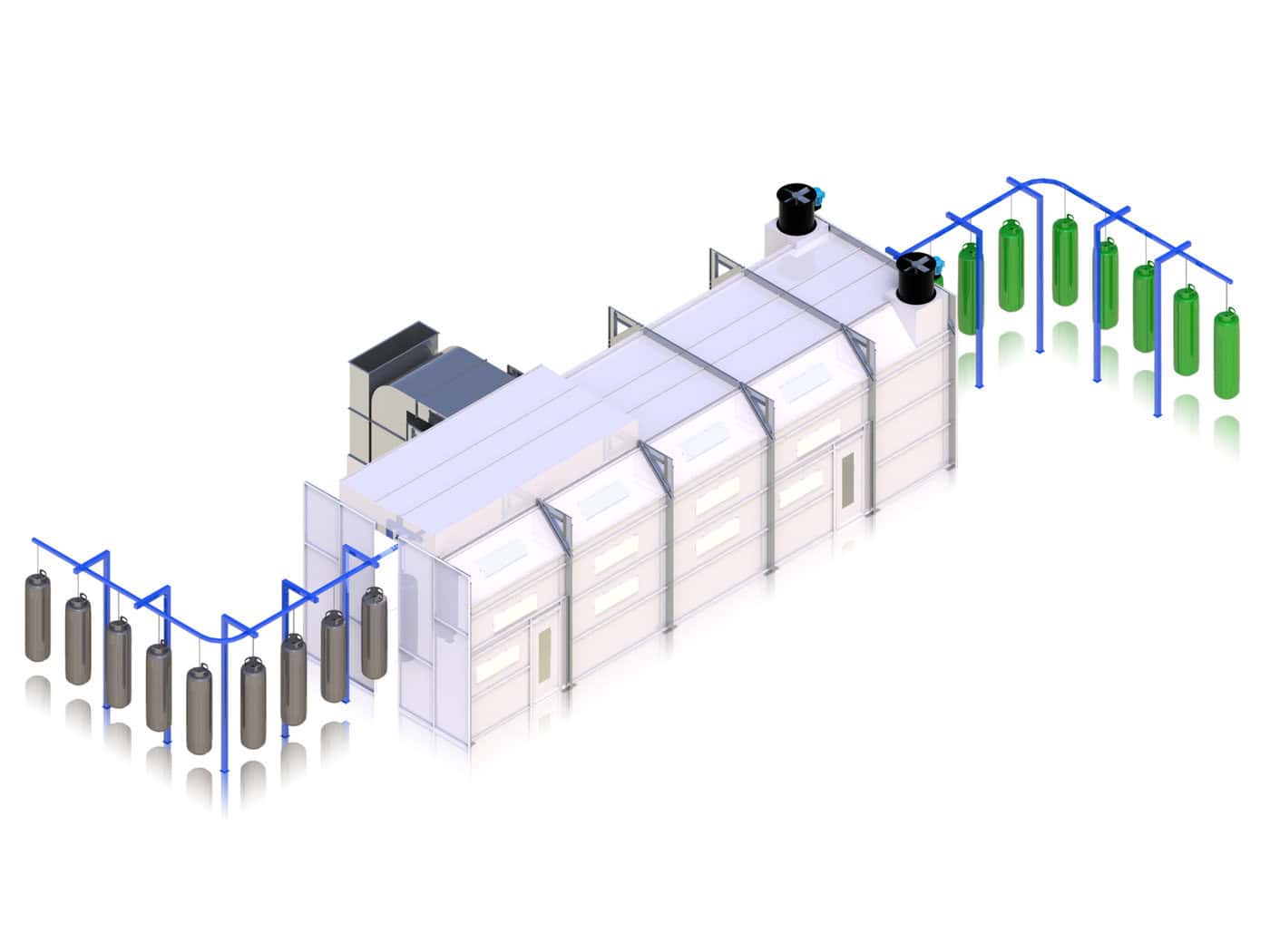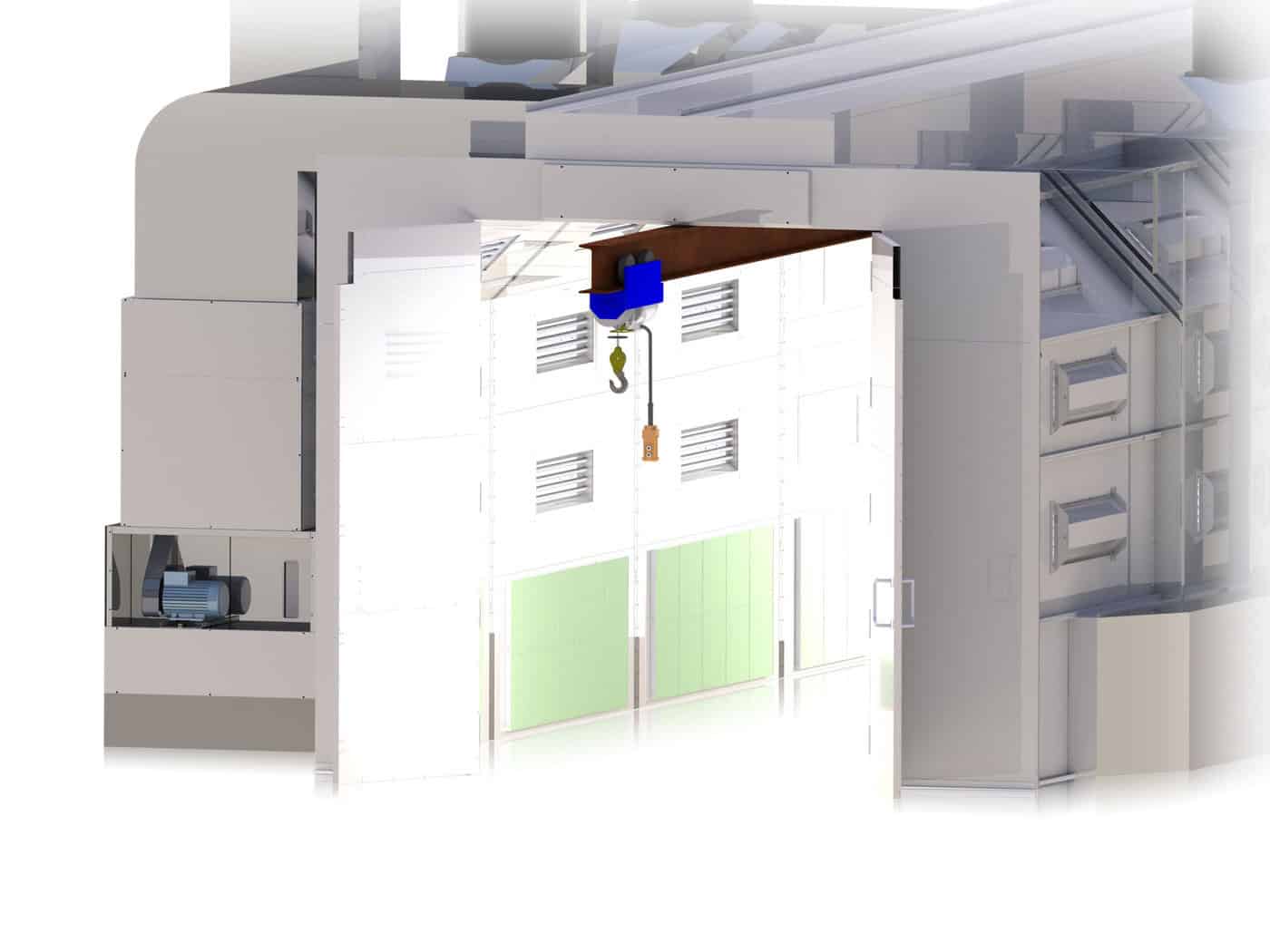Batch System vs. Automated Line: Choosing the Right Setup for Your Industrial Facility
As a leading paint booth manufacturer for the last 40 years, our team has decades of experience-backed testing that has allowed us to produce the highest quality finishing systems in the industry. But we’re not just in the business of selling, we’re here to help the success of our customers by providing the best equipment for their unique needs. So, when it comes to our industrial clientele, we recognize there are complex processes in which our finishing systems need to fit into.
With that being said, one of the most common questions we receive is, “Is a batch system or automated line right for my facility?” First, understand the key differences between these two setups.
The Differences Between a Batch System vs. Automated Line
- Batch System: Requires manual work. A worker would need to grab all parts that need to be the same color and set them up in the booth, finish them, and move onto the next color for another set of parts. This system is most commonly used by individual painters, independently owned facilities, or small MSOs. While this system provides more control over the process, there is also more room for error due to the required manual labor.
- Automated Line: Fully automated by robots and machinery. Parts are being fed through a conveyor or hook system to be painted by robots. Due to the robotics being used, they can be programmed to switch spray guns or colors without ever stopping production. Many car manufacturers use this setup for OEM painting since they can be programmed per make, model, and color.

(Left) Conveyer system

(Right) Hook system
5 Considerations When Choosing Between Batch vs Automated
- Volume of Work: Is your facility painting tens or hundreds or thousands of parts? For large scale operations, an automated line is better equipped to handle a high-volume workload. Since a batch system relies on manual labor to move, prep, and spray parts, it truly depends on the size of your workforce to determine if a batch system could work.
- Type of Parts Being Painted: For facilities that run the same parts day in and day out, an automated line will greatly increase efficiency, as there is little to change throughout the days or weeks. But for those that work with niche or a large variety of parts, having the manual aspect of a batch system would perform better to ensure every type of part is being prepped and sprayed the correct way.
- Required Time Per Job: If the powder coating process is faster than the time it takes to manufacturer the parts, a batch system is usually most efficient. For coating processes that take longer than it does to manufacturer the item, an automated system can help shorten the finishing time by eliminating the time it would take for a manual laborer to move, prep, and spray the parts. Having the line run continuously helps to make up for the difference in lost time.
- Available Floor Space: How big is the facility you’re working in? Batch systems tend to be smaller, and one piece of equipment can sometimes do the job of two. For example, an industrial oven could be used for drying and curing parts, saving a shop valuable floor space. Automated lines are typically shorter in length, but take up more width, meaning placement is crucial. All areas of the machinery should be accessible for maintenance and repairs, making cramped spaces an unlikely candidate for automated lines.
- Estimated Budget: Everyone’s favorite question to ask, “how much will it cost?” The answer we love at Accudraft, “it depends!” While the equipment for batch systems is inherently less expensive than automated line equipment, the scope of the project will determine the exact cost of each setup. Keep in mind, this is only referencing the equipment itself. Batch systems are cheaper upfront but have long-term costs of laborers. Automated lines have an extremely large upfront cost of the equipment, machinery, robotics, programming, etc., but operating costs can be significantly less over time.
Getting Started with an Industrial Finishing System
By working with an experienced manufacturer like Accudraft, we can help evaluate your facility’s needs and determine which setup is best for your production. We have industrial capabilities for hooks, conveyers, cranes, open-faced booths, ovens, and more. Our team will draw detailed blueprints of your system to figure out the best placement within your floor space. Once approved, we’ll get started with a project time, scope of work, and, of course, budget. To get started, contact us online.